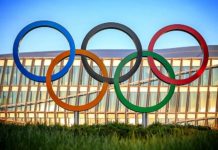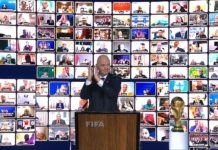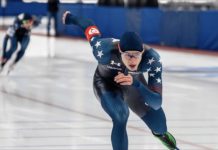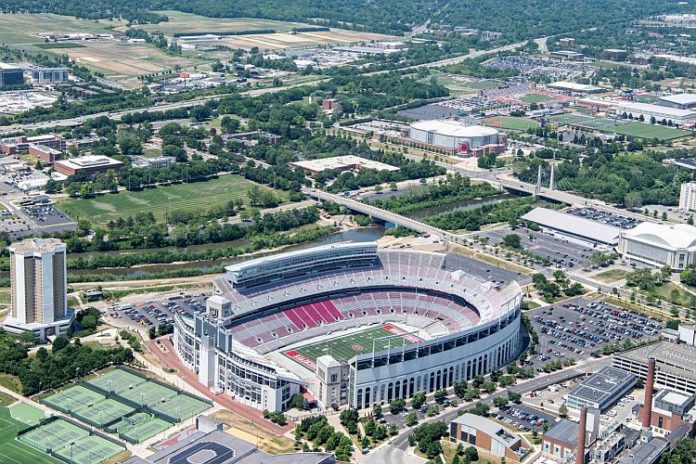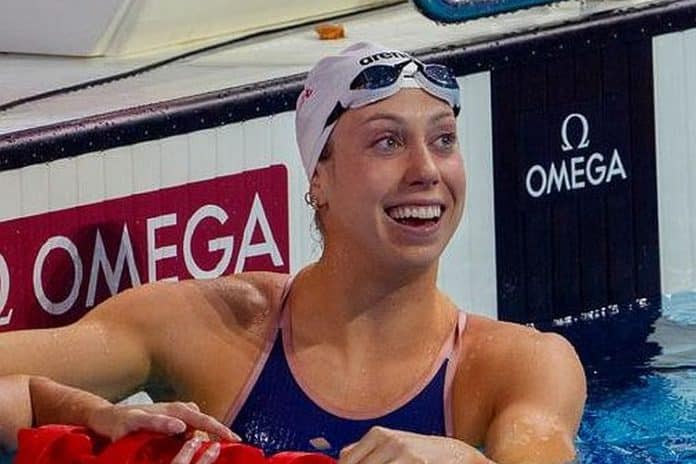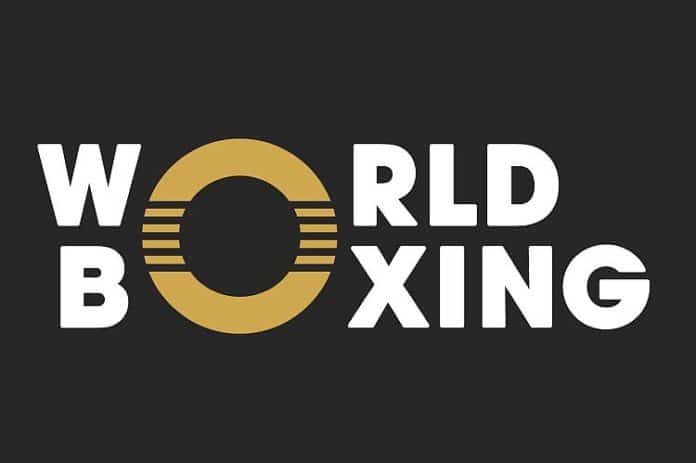★ The Sports Examiner: Chronicling the key competitive, economic and political forces shaping elite sport and the Olympic Movement.★
★ To get the daily Sports Examiner Recap by e-mail: sign up here! ★
≡ LIFETIME COLLEGE ATHLETES? ≡
The settlement in the House vs. NCAA case, with its billions of dollars in payouts to collegiate athletes, primarily in football and men’s basketball, is only the beginning of the remaking of college sports into something completely new.
Beyond universities playing their (mostly football and basketball) players, the framework that players can compete for four years in sports across five total years, is under fire and is being torn down in multiple – but not all – jurisdictions:
● Last December, Vanderbilt quarterback Diego Pavia won an injunction from the U.S. District Court for the Middle District of Tennessee, allowing him an extra year of eligibility by invalidating the NCAA rule that athletic participation at a junior college counts against the “five-year rule.” The NCAA has appealed, but also had to relax its rules for now.
● In April of this year, Rutgers safety Jeff Elad received a preliminary injunction from the U.S. District Court for New Jersey, also against enforcement of the five-year rule, as he played at a junior college and wants to play a fifth year of college football across seven seasons (including the Covid seasonal waiver).
Two basketball players have also sued the NCAA on its five-year rule regarding junior college participation, and other football players have received injunctions or State temporary restraining orders related to the junior-college rule.
● In July, Nevada wide receiver Cortez Braham Jr. won a preliminary injunction against the junior-college rule, but also challenged the five-year rule itself. Kansas City-based sports attorney Mit Winter – a former William & Mary basketball player – observed on his LinkedIn page:
“In the order granting the injunction, the court found the following:
“– the five year and JUCO rules are commercial, because they limit the number of years an athlete can play college athletics and therefore limit the ability to be paid as a college athlete
“– the rules have substantial anticompetitive effect and no procompetitive justifications
“– that Braham will be irreparably harmed by not being allowed to play college athletics
“As with the other recents decisions granting preliminary injunctions in similar cases, I’m sure the NCAA will appeal this one. Which means we’ll have four appellate courts addressing these issues. This is a perfect situation for the Supreme Court to step in and settle the issues.”
● Also in July, the NCAA won a case at the U.S. Court of Appeals for the Seventh Circuit, where the holding reversed a preliminary injunction in favor of Wisconsin cornerback Nyzier Fourqurean to play a fifth season in five years.
Fourqurean filed another suit this week, in the U.S. District Court for the Western District of Wisconsin, asking for another preliminary injunction to allow him to play; the hearing is slated for 27 August.
● The NCAA won another round in the U.S. District Court for the Central District of California on Monday (18th), where players from UCLA, USC and San Diego State were all denied preliminary injunctions against the five-year rule, adding to the confusion.
With different courts finding different results, the case of tailor-made for the U.S. Supreme Court, which has shown high interest in economic freedom and relaxing constraint wherever possible.
That means the five-year-rule could be eliminated by June of 2027 at the latest, opening the door to essentially “lifetime” college players who can be on teams as long as they remain in school, earning bachelor’s degrees, master’s degrees and Ph.Ds and new formats not yet conjured up by athletic departments.
This is insanity.
The mission statement of the national leader in athletic revenue in 2023 – The Ohio State University – states:
“The university is dedicated to:
“● Creating and discovering knowledge to improve the well-being of our local, state, regional, national and global communities;
“● Educating students through a comprehensive array of distinguished academic programs;
“● Preparing a diverse student body to be leaders and engaged citizens;
“● Fostering a culture of engagement and service.
“We understand that diversity and inclusion are essential components of our excellence.”
Ten-year careers as middle linebackers are not identified as a core offering.
Everyone involved, whether players, parents, school officials, broadcasters and all the rest know this we are now in the era of professional U-23 sports, primarily football and basketball. To properly support the young men and women involved, the “college sports” fiction needs to be dropped.
Instead, college football and college basketball need to be become fully professionalized, with franchises separated from the schools and run either as a single-entity organization, or as independently-owned teams. They would remain on campus, with the “team” or “league” renting the stadium, practice field, dorms or other housing, and the associated sports-related intellectual property from the university and operating on the campus as other businesses do.
In turn, the rights and responsibilities of the players would be collectively bargained with the “league” of whatever style it takes, and they would not be students. If they wish to attend, fine; this can also be part of the deal with the university and the collective-bargaining agreement. But let’s drop the fiction of the student-athlete football or basketball player.
What does this have to do with the Olympic-sports world?
Let’s start by saying that if a privately-organized league of “college” teams in baseball, softball, gymnastics, tennis or other sports can make enough money to establish a separate, professional project, they should be able to, and pay the schools involved a fee for use of the facilities made available, intellectual property, and staff time – such as athletic trainers – if used for their athletes.
The Sports Examiner has proposed this before, in a 29 April 2024 column, with research help from Texas-based NALathletics coach George Perry. Using the Equity in Athletics database of athletic department financial and participation data, Perry noted that 68 top schools in the leading collegiate conferences reported $8.57 billion in total spending and $4.76 billion in spending outside of football and basketball.
The “non-revenue” sports at these schools actually brought in about $1.10 billion (!) and a close guess on “non-revenue” sports costs is $2.14 billion, meaning a “fee” from the football and basketball “college leagues” of $1.04 billion a year would cover the costs of maintaining the “other” college programs such as gymnastics, swimming, track and field and so on. If those sports – on a national basis – can become self-sufficient in their own league, they can leave too.
Just looking at the college football television contracts alone, the big-four leagues earned $2.72 billion for the 2024 season, will earn $2.88 billion for 2025 and $3.71 billion for 2026. (Please refer to the April 2024 column for many more calculations.)
There’s plenty of money to cover this kind of arrangement. The players will win, as they will be professionals; the schools will win as they can turn their “pro teams” over to true professionals and fans will still stream in to their regular tail-gate spots on fall Saturdays. The “non-revenue” sports will be supported by the “pro” teams on campus and can offer scholarship contracts to students who can actually fulfill the role of “student-athletes.”
Are there a lot more details to this? Yes, of course. But it is possible to leave the fiction of a “student-athlete” playing college football behind.
This will not happen because of lawyers or players or athletic directors or broadcasters. Only university presidents – who are the NCAA, by the way – have the power to shape this new format and leave the hypocrisy of the imploding current system behind.
Rich Perelman
Editor
★ Receive our exclusive, weekday TSX Recap by e-mail by clicking here.
★ Sign up a friend to receive the TSX Recap by clicking here.
★ Please consider a donation here to keep this site going.
For our updated, 699-event International Sports Calendar for 2025, 2026 and beyond, by date and by sport, click here!





